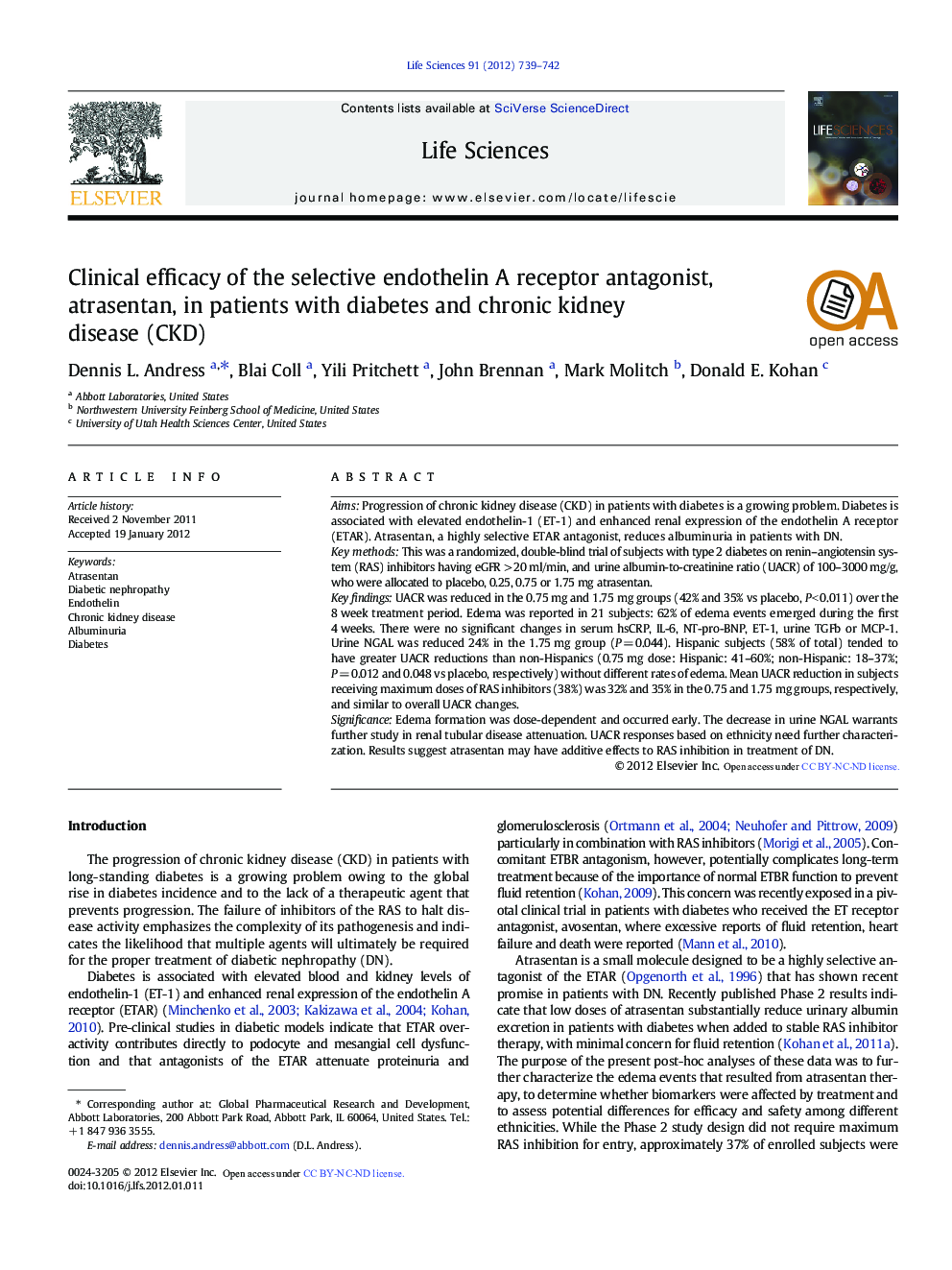| Article ID | Journal | Published Year | Pages | File Type |
|---|---|---|---|---|
| 5842516 | Life Sciences | 2012 | 4 Pages |
AimsProgression of chronic kidney disease (CKD) in patients with diabetes is a growing problem. Diabetes is associated with elevated endothelin-1 (ET-1) and enhanced renal expression of the endothelin A receptor (ETAR). Atrasentan, a highly selective ETAR antagonist, reduces albuminuria in patients with DN.Key methodsThis was a randomized, double-blind trial of subjects with type 2 diabetes on renin-angiotensin system (RAS) inhibitors having eGFR >Â 20Â ml/min, and urine albumin-to-creatinine ratio (UACR) of 100-3000Â mg/g, who were allocated to placebo, 0.25, 0.75 or 1.75Â mg atrasentan.Key findingsUACR was reduced in the 0.75Â mg and 1.75Â mg groups (42% and 35% vs placebo, PÂ <Â 0.011) over the 8Â week treatment period. Edema was reported in 21 subjects: 62% of edema events emerged during the first 4Â weeks. There were no significant changes in serum hsCRP, IL-6, NT-pro-BNP, ET-1, urine TGFb or MCP-1. Urine NGAL was reduced 24% in the 1.75Â mg group (PÂ =Â 0.044). Hispanic subjects (58% of total) tended to have greater UACR reductions than non-Hispanics (0.75Â mg dose: Hispanic: 41-60%; non-Hispanic: 18-37%; PÂ =Â 0.012 and 0.048 vs placebo, respectively) without different rates of edema. Mean UACR reduction in subjects receiving maximum doses of RAS inhibitors (38%) was 32% and 35% in the 0.75 and 1.75Â mg groups, respectively, and similar to overall UACR changes.SignificanceEdema formation was dose-dependent and occurred early. The decrease in urine NGAL warrants further study in renal tubular disease attenuation. UACR responses based on ethnicity need further characterization. Results suggest atrasentan may have additive effects to RAS inhibition in treatment of DN.
